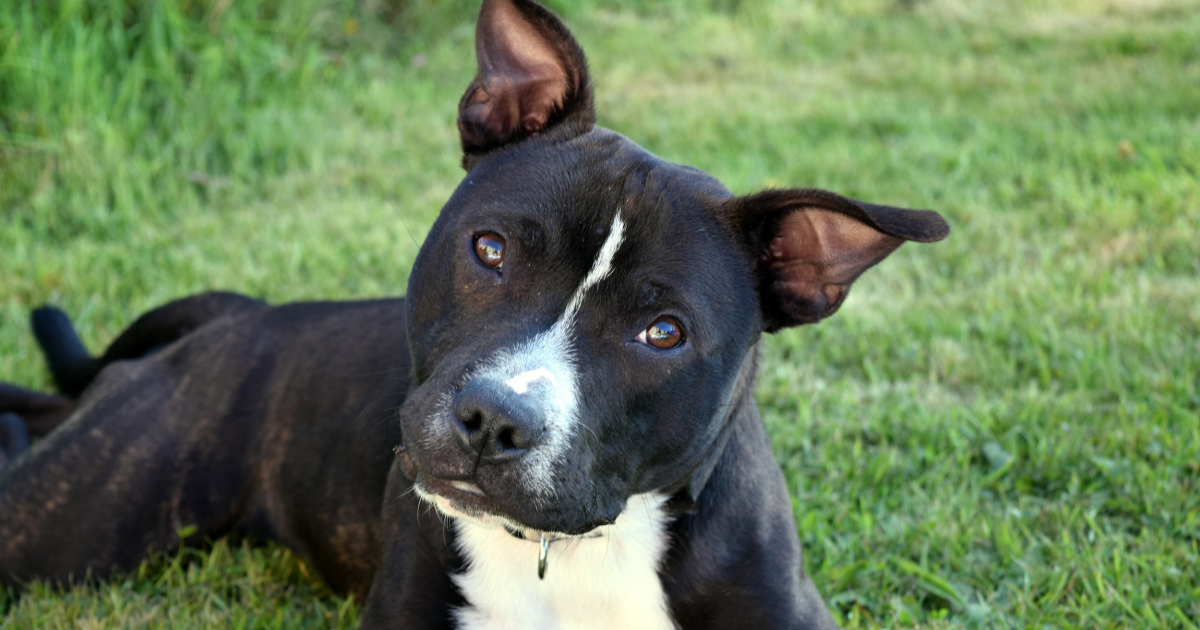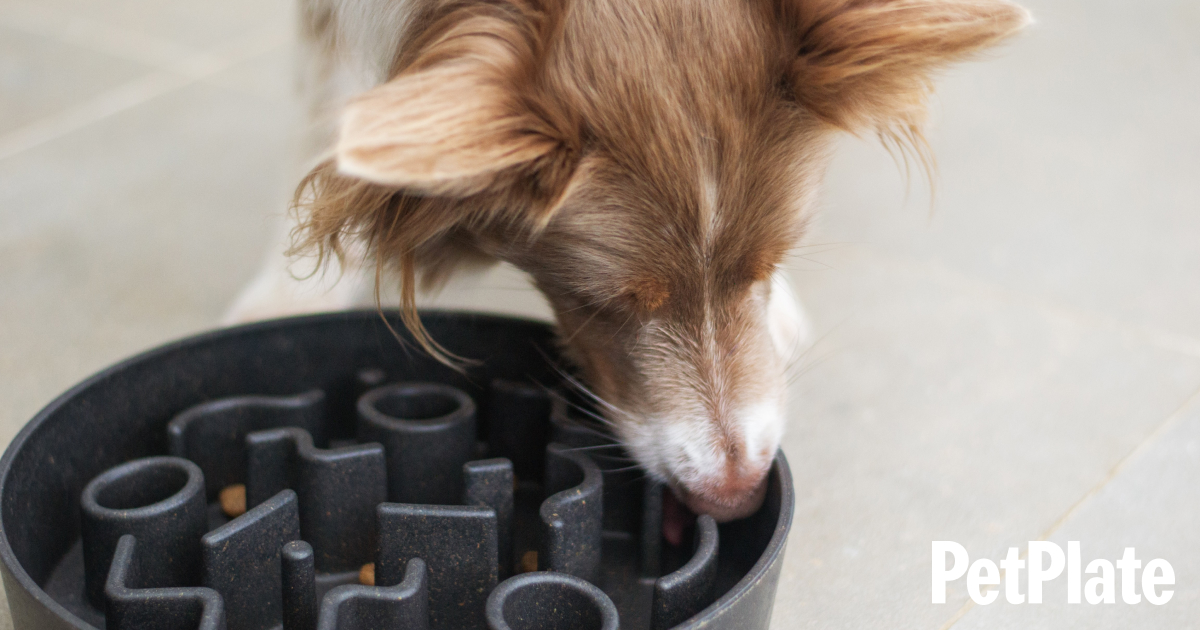Slow Down Mealtimes: Discover the Health Benefits of a Slow Feeder Dog Bowl
Some dogs consume their food at a perfectly reasonable pace. Others act like you’ll take their food away from them if they don’t gobble it up as quickly as possible. This problem may be especially acute if you have a rescue dog that once lived in the streets. These animals may have struggled to find enough food to survive and had to compete with other dogs for scraps.
If your pup has developed a frenzied raccoon style of eating, you may worry—reasonably—about its impact on their digestive health. Besides the potential to cause stomach upset, in some extreme cases, it can actually threaten their life.
Thankfully, speedy eating is a bad habit you can break, by using a product known as a slow feeder bowl. As its name implies, a slow feeder bowl can regulate the speed at which a dog consumes food.
What is a Slow Feeder Dog Bowl?

A dog using a slow feeder bowl (sometimes referred to as an interactive feeder) will need to solve a puzzle, or figure out a way to navigate obstructions that prevent excessively speedy food consumption.
Barriers to fast eating may include grooves, bumps, or ridges distributed throughout the bowl. They can be made from different materials, including plastic, stainless steel or silicone. Most slow feeders are bowl-shaped, while others come in the form of mats. These are designed primarily for small or flat-faced dogs, who might struggle to retrieve their food from a deep, concave object.
Alternatively, you could purchase a slow feeder insert, which converts your dog’s standard bowl into a slow feeder bowl.
Benefits of a Slow Feeder Dog Bowl
A good-quality slow feeder bowl can help keep your dog healthy and safe, protecting them from their own worst instincts.
Benefits include:
- Deceleration of the eating process. A slow feeder bowl will slowly but surely change your dog’s relationship with food, planting the idea that good things come to those who wait. As time progresses, slower eating will become a natural behavior.
- Lower likelihood of overeating. A slower pace of eating will give a dog’s stomach time to send signals to the brain to let it know that no more food is required. When a dog is gulping down food without restraint, they can easily overfill themselves, as the stomach can’t signal the brain fast enough to prevent overconsumption.
- Improved digestion. If you use a slow feeder bowl, your dog will be taking smaller mouthfuls and will no longer be able to gobble everything up in a few bites. This encourages a more deliberate approach to eating, which will inevitably lighten the load on their digestive system.
- Reduced risk of choking and vomiting. A dog who virtually inhales food could get something stuck in their throat, which leads to choking or vomiting. A slow feeder bowl helps to prevent the swallowing of over-large pieces.
- Less gastrointestinal discomfort. When the stomach fills with poorly chewed food, it can take a long time to digest everything properly. This can cause a heavy stomach, clogged intestines, gas and constipation, leaving your dog feeling sluggish, lethargic, and altogether miserable.
- Mental stimulation. A slow feeder bowl will keep your dog busy solving puzzles. This can be especially nice if you have a high-energy dog, since it will encourage focus and concentration.
- Eliminate the dangers of bloating. A dog who sucks up food like a vacuum cleaner could be at risk for a condition known as gastric dilatation-volvulus (GDV), often referred to simply as bloating. A dog who eats too fast can become bloated from taking in prodigious quantities of air, which can cause excess pressure on the stomach, intestines and circulatory system. If blood flow is restricted because of this pressure, a dog could go into shock, and this could become a life-threatening condition.
How to Choose the Right Slow Feeder Dog Bowl for Your Dog

Once you begin shopping for slow feeder dog bowls, you’ll quickly discover you have plenty of options. The idea has taken off like wildfire, and manufacturers have gotten busy creating customized lines appropriate for different types of dogs.
Feeder bowls come in various designs and difficulty levels. You’ll need to evaluate your dog’s capacity to navigate obstacles. Another factor to consider is the material used to make the bowl. High-quality plastic and stainless-steel bowls are preferable to ceramic or stoneware since the latter are more prone to collecting bacteria.
Different Types of Slow Feeder Dog Bowls
Here are eight slow feeder bowls that have been getting rave reviews from satisfied customers. You should find at least one perfect for your pooch among the various design options!
- Outward Hound Fun Feeder Slow Bowl. This BPA-free hard plastic bowl comes in multiple sizes, colors and puzzle styles, with models that are appropriate for just about any dog. The various designs represent different levels of difficulty, which gives you the possibility of upgrading once your dog figures out how to use one of the easier bowls (remember, solving the slow feeder puzzle is good for your dog’s mind).
- Neater Pet Brands Stainless Steel Slow Feeder Bowl. One of the better stainless-steel models available, this bowl comes in two sizes, either 1.5 or 3 cups. It features an inner column that slows down eating to a moderate degree. This stainless-steel bowl is nearly indestructible and generally easier to clean than plastic bowls.
- Frisco Silicone Slow Feeder Mat. One of the best options for flat-faced dogs, this mat-shaped bowl is only 1.3 inches deep. It features soft silicone grooves that a short-snouted dog can nudge aside to get at the food, guaranteeing they can consume what they need (but at a reasonable pace, of course).
- Neater Pet Brands Raised Slow Feeder Bowl. With legs extending up to five-inches off the ground, this solid BPA-free plastic bowl comes in various sizes for different-sized dogs. A raised bowl is the perfect choice for older dogs that may suffer from arthritis and joint pain and can’t bend their necks comfortably.
- Frisco Bone Shaped Ridges Slow Feeder Dog Bowl. One of the few slow feeder options that costs less than $10, this budget bowl is made from BPA-free hard plastic and can hold up to three cups in its largest size. Its bone-shaped ridges are relatively easy, and its shallow depth makes it workable for flat-faced dogs and those with normal-length snouts.
- OurPets Durapet Stainless Steel Slow Feeder Bowl. Featuring the uniquely efficient inner column design of other good-quality stainless steel bowls, this product comes in three sizes (small, medium and large), with the large option holding up to eight cups of food. The industry-leading size of the latter option makes this a superb choice for jumbo-sized breeds.
- IRIS Slow Feeding Dog and Cat Bowl. One of the few bowls that can also slow down a fast-eating kitty, this sleekly designed slow feeder is available in long-snout or short-snout models. It’s made from BPA-free hard plastic, and you can choose between two-cup and four-cup options.
- OurPets Spiral Slow Feeder Insert. Manufactured in the shape of a wheel or fan, this sturdy silicone insert can convert any regular bowl that holds between four and 11 cups of food into a top-grade slow feeder. Slow feeder bowls usually come with non-slip pads to prevent the bowl from moving around when a dog pushes against it. If you use an insert, you may have to find a way to attach or anchor your converted bowl to the floor.
Slow Feeder Dog Bowl FAQs

If the slow feeder bowl concept is new to you, you will have some questions. Here are a few of the common queries about solving speed eating behavior in canines:
Are slow feeder bowls suitable for dogs?
Any dog can benefit from slowing down and taking the time to savor and enjoy their food. Even if they only eat moderately fast, there’s really no downside. The mental stimulation they gain from learning how to use a slow feeder bowl is undoubtedly advantageous, since it can counteract cognitive decline and help prevent boredom.
How do I know if my dog needs a slow feeder bowl?
If your dog has ongoing digestive issues, occasionally vomits or chokes while eating, or shows signs of bloating after meals, the speed at which they’re consuming their food could be the problem. But even if your dog has yet to experience any of these complications, if you think your dog is eating too fast, you should follow your instincts and try a slow feeder bowl.
Do slow feeders tire out dogs?
When you have a high-energy dog, you’ll constantly be searching for ways to help them calm down. Slow feeder bowls force your dog to exert significant mental energy and physical effort to retrieve and consume their meals.
Do slow feeder dog bowls work with wet food?
These clever contraptions are designed to hold all types of dog food and to distribute it in appropriate-sized morsels. The one issue that can come up with wet food is that it tends to make bowls stickier and dirtier, as tiny pieces of wet food can dry out and get lodged in the cracks, crevices, nooks and crannies of the interior grooves, columns or wedges. You should purchase a dishwasher-safe slow feeder bowl if you plan to fill it with wet food.
Make Mealtime More Enjoyable for Your Dog

Think about your own eating experience. Doesn’t food always taste better when you take the time to slow down and enjoy it? And leisurely dining is a real safeguard against intestinal stress. The same goes for dogs.
Especially since PetPlate’s 100% human-grade, vet-formulated, chef-inspired meals are practically designed to lingered over, since they feature juicy morsels of premium meat, real vegetables and wholesome grains. Time to break out the (good) slow feeder bowls!


